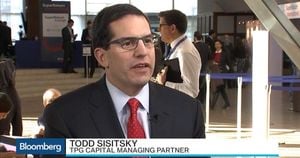New Delhi: India’s Union Budget 2025 has set the stage for significant changes aimed at fiscal deficit reduction through strategic tax cuts, particularly targeting salaried individuals. According to analysts from BNP Paribas, these measures are strategically crafted to invigorate discretionary consumption among citizens at a time when maintaining balance within the economy is more pertinent than ever.
The government has outlined its ambitious agenda to reduce the fiscal deficit to 4.4% of GDP by FY26, which marks a decrease from the estimated 4.8% for FY25. This ambitious recalibration is seen not just as necessary fiscal discipline but as part of broader economic recovery measures. With these new tax regulations, the government is poised to uplift the disposable income of Indian taxpayers significantly, thereby encouraging higher spending on non-essential goods and services.
The Union Budget for FY25 is aptly focused on stimulating economic growth through fiscal consolidation, directly benefitting salaried individuals. By raising the income threshold and easing tax slabs under the New Tax Regime (NTR), the government has opened up avenues for more taxpayers to enjoy relief. Currently, approximately 75% of Indian taxpayers have migrated to the NTR. This strategic shift may signal the possible end of the era where exemptions and deductions played significant roles in lowering tax liabilities.
With the introduction of these tax cuts, taxpayers can expect their disposable income to increase between 2% to 7%, depending on their income levels. This visible spike is predicted to drive consumer behavior positively, especially enhancing discretionary spending across various sectors such as durable goods, automobiles, asset management, healthcare, travel, and jewelry. Indeed, as reported, the “Affluent India” sector, characterized by those with greater purchasing power, is likely to witness considerable growth. The report indicates taxpayers will likely engage more with small-ticket discretionary purchases, significantly across monthly budgets of Rs 2,000 to Rs 10,000.
The salaried class, particularly those earning more than Rs 10 lakh annually, stands to gain the most from these tax reforms. Notably, figures from FY23 highlight around 9.7 million salaried individuals fitting this profile. By delivering tangible benefits to this demographic, the government hopes to champion overall economic consumption and invigorate the economy.
Despite taking steps to increase consumption, the government has maintained conservative fiscal projections. The Finance Secretary Tuhin Kanta Pandey articulated the importance of synchronizing fiscal and monetary policies at the recent post-Budget interaction, emphasizing functional coexistence to attain desired economic growth. This balance is pivotal as the Reserve Bank of India (RBI) prepares to deliberate potential interest rate cuts to support this momentum, with decisions expected from their Monetary Policy Committee meeting scheduled for early February.
Several economic experts have voiced their opinions on the duality of priorities within the budget, which superficially favors consumption yet maintains strict fiscal targets. The government’s organized commitment toward prudent expenditure management also reflects its long-term vision for fiscal health. Notably, Sunil Damania, Chief Investment Officer at MojoPMS, believes the budget’s provisions strike equilibrium between consumption-led growth and capital expenditure. Not only does the total projected capex reach Rs 20 lakh crore by FY2026, but the recurring benefits of the Rs 1 lakh crore tax rebate promise improved disposable incomes over time, discouraging reliance on one-time stimuli.
Harsh Madhusudan Gupta, Fund Manager at Ionic Asset, argues the government appears to be transitioning from aggressive capex initiatives previously dominating the post-COVID recovery phase. According to Gupta, the latest tax reforms reflect the intent to drive consumption and bolster private capital expenditure, aligning with sustainable growth paths. Alongside these insights, experts remain hopeful, foreseeing potential rebounds for Foreign Portfolio Investments following January’s heavy outflows, especially with mixed prospects for the U.S. stock market.
International rating agency Fitch has also reviewed India’s fiscal outlook, deeming the budget’s deficit projections for FY25 and FY26 as not only realistic but also achievable. Jeremy Zook, Director at Fitch Ratings, highlighted the government's transparency and clarity concerning its medium-term fiscal strategy aimed at maintaining fiscal discipline. The intention to keep debt steadily declining—sliding to 50% of GDP by FY31—coupled with disciplined fiscal metrics should support India's standing relative to its global peers.
While the predictions and initiatives surrounding the Union Budget 2025 showcase optimism, the pathway to achieving these objectives remains strewn with challenges. Economic growth forecasts might hinge on how effectively the government can implement its fiscal strategies, especially amid moderate revenue growth expectations. The Union Budget, with its sweetened tax relief for the middle class, is carefully positioned to boost consumption, yet whether it strikes the right balance with capital investment remains to be seen.
With the government advocating for both immediate consumer benefits and long-term fiscal prudence, the outcomes of these measures could spell pivotal changes for India’s economic health. The union’s approach, emphasizing consumption alongside disciplined fiscal targets, seems poised to guide India's economic policies through challenging terrains, marking perhaps another significant chapter for the nation’s financial future.



